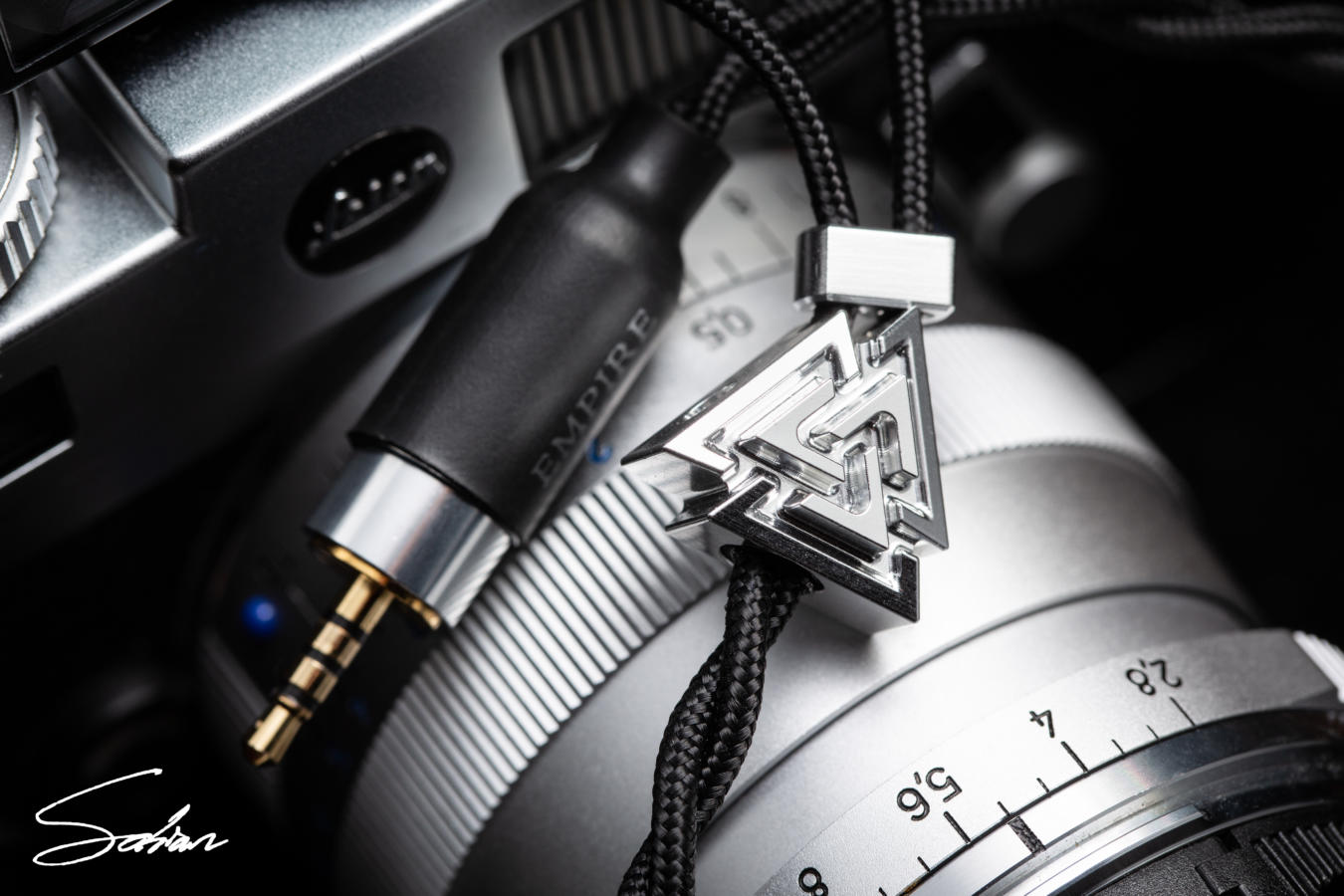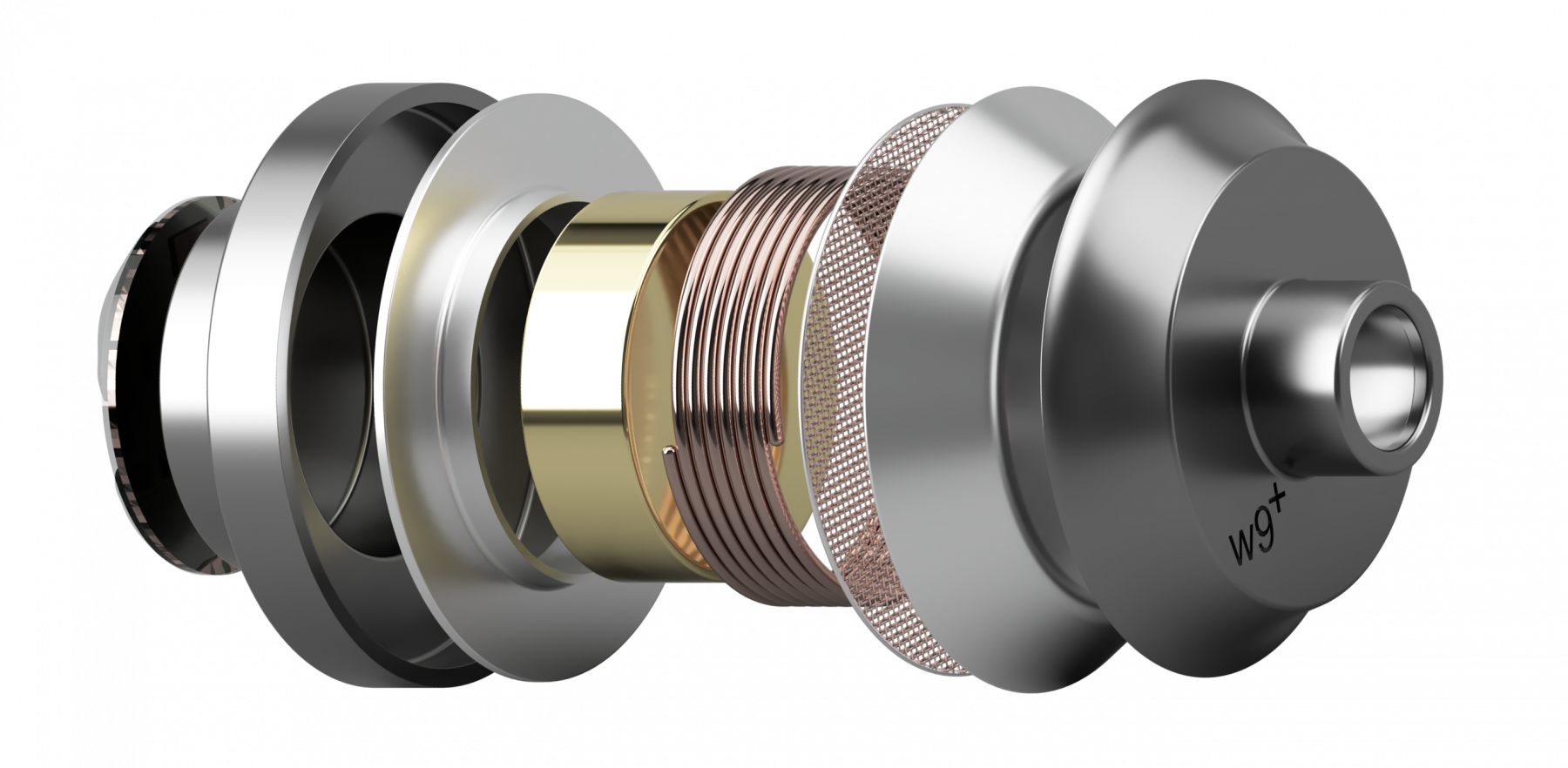DISCLAIMER: Empire Ears provided me with the ODIN in return for my honest opinion. I am not personally affiliated with the company in any way, nor do I receive any monetary rewards for a positive evaluation. I’d like to thank Empire Ears for their kindness and support. The article is as follows.
Empire Ears is a Georgia-born in-ear manufacturer, who currently hold stock as one of the most daring, most audacious monitor makers in the industry. Making their name off of penta-bore designs and 14-driver behemoths, Empire arguably made their biggest splash with the debut of their hybrid IEMs. Not only did they establish a slew of novel tech from A.R.C to synX, but they produced a whole, new dynamic driver for them as well, which enthusiasts and professionals alike have gone on to praise for its bottom-end reproduction. And, now, with custom-transformed electrostats thrown into the mix too, Empire present the flagship tri-brid ODIN: A grand, sweeping in-ear with resolution and immersion by the truckload.

Empire Ears ODIN
- Driver count: Two Weapon IX+ dynamic drivers, five balanced-armature drivers and four electrostatic drivers
- Impedance: 3Ω @ 1kHz
- Sensitivity: 108dB @ 1kHz, 1mW
- Key feature(s) (if any): EIVEC, synX crossover technology, A.R.C. technology, proprietary DDs and BAs
- Available form factor(s): Universal acrylic IEMs
- Price: $3399
- Website: www.empireears.com
Packaging and Accessories
The ODIN I received from Empire Ears on loan is the Founder’s Edition variant, which has signatures from the Empire staff on the box, a certificate (with messages written and signed by Jack and Dean Vang) and an owner’s card packed in the in-ear’s compartment as well. This variant of the ODIN has Dean Vang’s signature engraved on the shells too. This Founder’s Edition instantly sold out at launch, so the following will be an overview of what you get in the standard retail packaging.

The ODIN comes in packaging not unlike their previous flagship Wraith: A large, imposing black box with the Empire logo cleanly embossed in silver on the front. The difference here is this ODIN’s arrives wrapped in a white sleeve, topped with the Valknut logo embossed in gold, which I think is a nice, classy touch; evocative of jewellery or luxury. This box sports a magnetic lid, which folds open to reveal the ODIN and its Stormbreaker cable nestled inside. And, on the side is a pull tab, which reveals a drawer storing the included accessories: A round, engraved, metal case and Final’s Type-E ear tips, which come displayed in a nicely-made metallic tray. Last, but certainly not least, is an Empire-branded cloth tucked in the case.

The ODIN also comes with Empire’s usual paperwork, which comes in the form of their quick-start guide. It’s a well-made guide complete with illustrations; an effort I very much appreciate. And, on it is also a QR code for the full guide on their website, along with links to their social media. Personally, I feel their support staff’s e-mail or their hotline would’ve been more appropriate here, rather than the social media links. But, that’s really my only qualm with the booklet. Then, finally, tucked within the guide are Empire-branded stickers as well, which are always nice additions to the unboxing experience.
We mustn’t forget to mention the ODIN’s premium Stormbreaker cable, crafted by renowned cable maker: PW Audio. The Stormbreaker is based on their 2-wire 1960s cable, which consists of a USA-sourced copper conductor in a coaxial design, enclosed within a black, cotton jacket. The differences between this cable and the 2-wire 1960s would be the gorgeously-made, CNC’d, chrome Valknut splitter, as well as its 2.5mm plug, both made in collaboration with Pentaconn. If you don’t have a 2.5mm source, you may buy matching, Pentaconn adapters to 3.5mm and 4.4mm plugs on Empire’s online store.

Speaking briefly of the metal case, I think it’s a fine addition to the ODIN’s package. It’s almost the exact same case as the ones I’ve seen from brands like Jomo Audio, Metal Magic Research and JH Audio, so it’s not exactly the most unique extra out there. It’s also hard to ignore the recent rise of bespoke leather cases accompanying flagship products. So, from that lens, I can see where some audiophiles (collectors, especially) may want a tad more out of Empire here. But, on the other hand, looking at it from a touring musician’s perspective, metal is a lot more durable than leather. So, depending on who you are, you may or may not be happy with Empire’s choice of case. I personally feel this is a more audiophile-aimed IEM that could benefit from a more luxurious accessory. But, I can see the for musicians argument too. Your mileage will vary.
Ergonomics and Build
In terms of looks, there’s no denying that these ODIN’s are absolute stunners. For them, Empire have premiered another bombshell of a faceplate; this time, fittingly dubbed Bifröst after the rainbow bridge of Norse mythology. It is made in the USA by an award-winning chemist, and it’s made up of nine, individual polymer layers – perhaps, in reference to the Nine Realms of Norse mythology as well – in three, proprietary lamination steps. Each polymer layer reacts to light in different ways, which results in show-stopping spectrums of colours appearing and disappearing as you tilt the faceplates around in light. Finished with gold Valknut and Empire logos, it’s easily the prettiest pair of faceplates I’ve seen in recent memory.

The shells come in Empire’s standard gloss-black, and it’s a very fitting colour here. The faceplates are already flashy and loud on their own, so this piano-black does make a perfect match. As is always the case with Empire, both earpieces are smoothly, evenly-lacquered all throughout without a bubble or crack in sight. Everything from the faceplates to the 2-pin sockets fit flush, and both the sound holes and the Weapon IX+ vents are cleanly, flawlessly-drilled as well. The one gripe I have with the ODIN’s shell would be the lack of a lip on the end of the nozzle. Each time I remove the monitors from my ears when I’m using JVC’s Spiral Dot tips, they’ll come off the IEMs and stay stuck in my ears; without fail. It’s less an issue with the stock Final tips, but it does make tip-rolling more difficult than necessary. Hopefully, it will be fixed in the future.
The ODIN’s universal shell is slightly on the larger side, especially if you’re used to the slimmer profiles of Campfire Audio or 64 Audio’s universals. Though, to be fair, given the amount of components inside, Empire’ve done a pretty impressive job organising those internals and achieving this silhouette. It’s even smaller than the Wraith, which had more balanced-armatures, but no dynamic drivers. In my fairly large ears, both pieces fit very nicely. I probably would’ve liked a bit more of a lip around the cymba area for more grip and skin contact to conduct those DDs. But, that’s my one gripe with the fit.

Lastly, the ergonomics of the Stormbreaker cable are fairly positive overall. This coaxial design makes it much lighter and more low-profile than most aftermarket cables. And, the plugs and Y-split don’t weigh much, if anything at all, either. My one gripe would probably be with the memory of the cable. It retains bends from top to bottom, and it isn’t the prettiest look. But, I reckon the cable’s lightness and complete lack of microphonics (rubbing noise) will slide that nitpick by easily.
EIVEC Technology
EIVEC (or Empire Intelligent Variable Electrostatic Control) is proprietary Empire tech developed for their initial electrostatic hybrids: The Valkyrie and Wraith. The aim is to act as a bridge of sorts between the e-stats and the rest of the driver sets, so they’d operate in conjunction to create a seamless, coherent sound. EIVEC involves developing a custom transformer, which – in this ODIN’s case – drives all four of its electrostatic tweeters, instead of the one-transformer-per-tweeter config many other manufacturers use for their electrostatic hybrids. Considering Empire’s claims that “getting the driver types to play nice with each other” was the ODIN’s toughest task, I think it’s safe to say that EIVEC plays a major role in this success.

Image courtesy of Empire Ears
Weapon IX+
Empire’s custom-built, Weapon IX dynamic driver played an immeasurably crucial role in the success of their X, hybrid in-ear monitors, responsible for what both critics and enthusiasts alike have called “the best” or “most memorable” low-ends they’ve ever heard out of an IEM. The product of years of R&D at Empire’s skunkworks, they claim to key to its sound lies in its bass-reflex enclosure system, which has a front-firing sound port and a rear-firing vent for utmost efficiency. In the years since, Empire have continued to refine their diaphragm, and now premiering with the ODIN is the new Weapon IX+ dynamic driver. It sports a larger internal-coil diameter, a more linear excursion envelope and more capable suspension to better-handle peak-to-peak excursions while mitigating distortion. It’s a driver that features in the ODIN, Hero and the upcoming MK2 variants of their X series, and I can’t wait to hear all the flavours Empire will draw out of this stunning DD.

Image courtesy of Empire Ears
A.R.C. Technology
A.R.C. stands for Anti-Resonance Compound, and it’s a solution that coats every component within Empire’s in-ears. What it does is raise the relative mass of each part and dampen unwanted resonances and vibrations. This substance consists of a proprietary mix of polymers, designed to achieve a specific density-to-rigidity ratio; maximising vibration absorption without transmitting those vibrations or gumming up the sound. In addition, A.R.C tech also contributes a layer of shock protection to the in-ear’s internals, so you’ll receive increased durability along with that cleaner, interference-free sound.

Image courtesy of Empire Ears
synx Crossover Technology
synX Technology is Empire’s proprietary solution to crossovers; the system in multi-driver IEMs responsible for delegating the different frequency ranges for each driver or driver set to reproduce. Empire’s synX system is rather unique, in that it often has more pathways than drivers or driver sets, which results in multiple alternate paths for each one. Empire claim this results in zero phase incoherence and precise tone control. The former means each driver set’s responsible for their own frequency range, so there aren’t any overlapping frequencies, which may interfere and cancel each other out at the ear. The latter is a feature for engineers or tinkerers, where all EQ applied to the crossover only applies to the driver set it’s altering. Empire promise realistic imaging, low distortion, low noise and a wide frequency band with synX crossovers.

Image courtesy of Empire Ears


